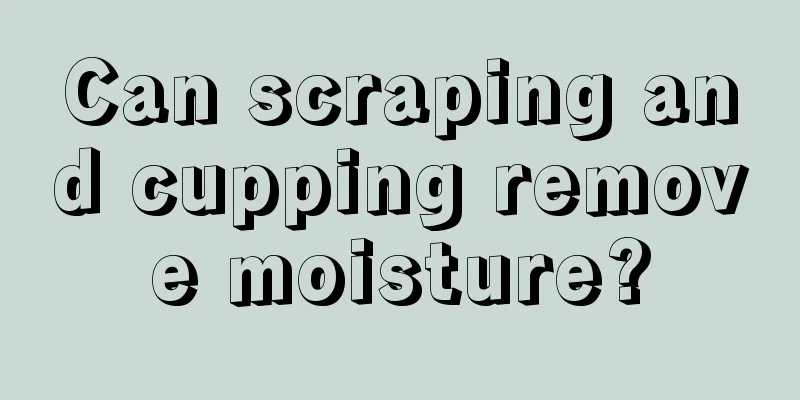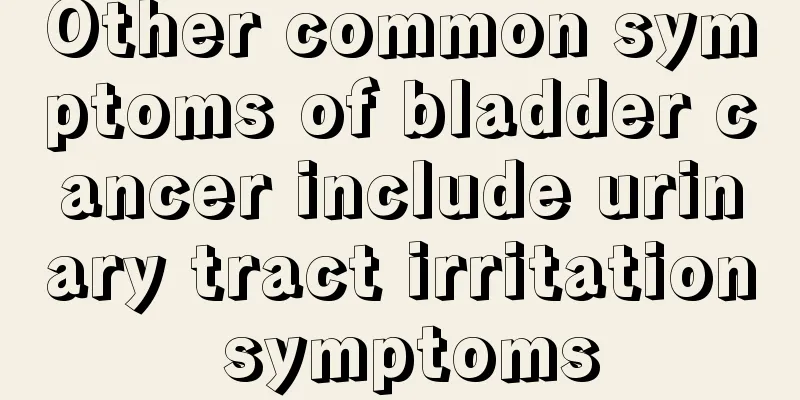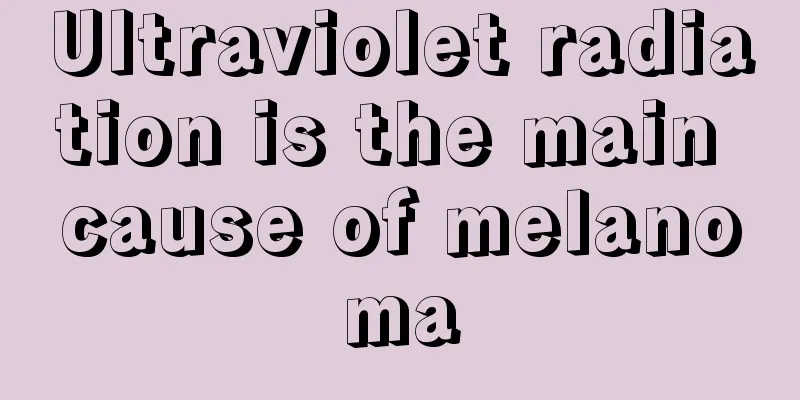Can scraping and cupping remove moisture?

|
Many female friends often feel cold, especially in winter. They wrap themselves tightly but still feel cold. This is related to their physical constitution, which means that they are cold and prone to chills. If you want to improve the condition, you can do more scraping and cupping. These are more traditional Chinese medicine health care methods, which massage the body's acupuncture points, dredge meridians, expel dampness and toxins, promote blood circulation and remove blood stasis, and dispel cold and keep warm. Therefore, scraping and cupping can remove moisture. Which is better for removing moisture: scraping or cupping? Removing dampness is the popular understanding of the main function of cupping and scraping. Little do people know that this is a huge misunderstanding! The main function of these two traditional Chinese medicine therapies is not to remove dampness, and the effect of removing dampness is not obvious! Not only do people misunderstand cupping and scraping, they also like to talk about "heavy dampness". Physical fatigue, laziness, getting angry, and eczema are all classified as heavy dampness, but this is not necessarily the case. The purpose of cupping is not to remove dampness "Cupping can remove dampness and toxins, which is the biggest misunderstanding about this therapy." In Chinese medicine, the principle of cupping is: through the squeezing effect of physical negative pressure, blood vessels are caused to rupture and bleed, and blood penetrates into local tissues to unblock stagnation and achieve the effect of regulating the body's balance. Its main function is not to remove dampness, but to dredge the meridians and activate the collaterals, promote qi and blood circulation, reduce swelling and relieve pain, dispel wind and cold, and detoxify. Therefore, cupping is often used to treat diseases related to meridian blockage, such as irregular menstruation, neck, shoulder, waist and leg pain, etc. At the same time, cupping also has the function of "purging fire" and is often used to treat various solid diseases, including heat and cold. The purpose of scraping is not to remove dampness The principles of scraping and cupping are similar, and the same principle applies to "scraping out sha". Through treatment on meridians and acupoints, it has a good effect on fever, heatstroke, colds and other solid diseases, and can also effectively relieve heat symptoms such as getting angry. In comparison, scraping works on the shallow part, while cupping works on the deeper part; and scraping can only be used on people with solid diseases or fever symptoms. It is not recommended for the elderly, children, and the weak, and is prohibited for pregnant women. Eliminating dampness mainly relies on internal treatment Eliminating dampness mainly relies on internal treatment, first eliminating dampness and then regulating the spleen and stomach Many people think that cupping can quickly remove moisture, but in fact it cannot achieve the expected effect. "The essence of 'dampness' in traditional Chinese medicine is water." Dampness is mainly discharged through urine, feces and sweat. Although the main purpose of cupping and scraping is not to remove dampness, they do "draw" out some tissue fluid and have a certain effect in removing dampness. However, since not much water comes out, the dehumidifying effect is actually very limited. Cupping is relatively better, while scraping has almost no effect in removing dampness. "Eliminating dampness mainly relies on internal treatment rather than external treatment." Patients with heavy dampness must first identify the type of dampness, and then use diuretic drugs to relieve surface symptoms. Since the fundamental cause of heavy dampness is insufficient spleen and stomach function, after removing dampness, you also have to regulate the spleen and stomach to fundamentally improve your physical condition. "The darker the color of the sha pulled out or scraped, the heavier the dampness in the body!" Typical symptoms of dampness Thick white tongue coating, thick yellow tongue coating, sticky mouth, loss of appetite, indigestion, fatigue, muscle aches, sticky stools, etc. The darker and darker the cupping color, the heavier the moisture It's all legend! The color is related to blood and cupping strength! If the main function of cupping and scraping is not to remove dampness, then why is the color of the "sha" that comes out different, some darker, some lighter, some red, and some purple? It is actually very simple to explain. First of all, different people have different blood colors and skin colors, so the color of the "sha" that comes out will naturally be different. Secondly, the depth of the color of the sha is also related to the negative pressure of cupping. For example, in addition to fire cupping, Chinese medicine cupping also uses bamboo cups, vacuum cups, etc. Among them, bamboo cupping deoxygenates in water, which does not have the same temperature as fire cupping, and the exhaust pressure is relatively small. It is not only inconvenient to operate, but also not powerful enough, and the color of the sha tends to be lighter. What to do if your body is damp? Here are some good acupoints for removing dampness. Select the Quchi point: at the outer end of the elbow transverse line when the elbow is bent. The damp and turbid qi of the large intestine meridian gathers here, which means that the blood qi from the limbs gathers here. Massaging this acupoint can regulate qi and blood and eliminate rheumatism. Take the Mingmen point: It is located below the second lumbar vertebra on the back of the human body and opposite to the navel. It is the center of human vitality and the place where vital energy "resides". Use moxibustion for 20-30 minutes Take the Weizhong point: at the center point of the popliteal fossa. The bladder meridian is the body's largest detoxification and dehumidification channel, and the Weizhong point is the sewage outlet on this channel. If it is not unobstructed, moisture cannot be discharged, which may cause arthritis. Take Yinlingquan Point: Yinlingquan is the He point of the spleen meridian of foot Taiyin. It is good at strengthening the spleen and eliminating dampness. It is an important point for removing dampness and resolving phlegm. It focuses on removing dampness and is good at treating diseases caused by dampness. If this point is invaded by dampness, knee pain, heavy feet and difficulty walking will occur. Stimulating this acupoint can clear away dampness and heat, promote blood circulation and activate collaterals, and help relieve discomfort such as abdominal distension and knee pain. Take the Zusanli point: it is located three inches below the outer knee, and is an acupoint on the Stomach Meridian of Foot-Yangming. It is a commonly used acupoint for treating digestive system diseases. It has the effects of strengthening the spleen and stomach, and replenishing the body. In layman's terms, it can enhance the digestive function of the spleen and stomach, promote appetite, and regular massage has the effect of strengthening the body. Take Fenglong point: It belongs to the Stomach Meridian of Foot-Yangming, and is located on the front and outer side of the calf, about eight inches above the shoulder of the outer ankle. It is not only a collateral point of the stomach meridian, but also connects to the spleen meridian. It has a good regulating effect on the spleen and stomach, the two major internal organs, and is an important point for removing dampness and phlegm. Massaging this acupoint can effectively strengthen the spleen and eliminate dampness. Take the Jiexi point: the concave point where the instep and ankle joint move. This acupoint is used to eliminate phlegm and dampness throughout the body. It is very effective in relieving edema of the lower limbs. Moxibustion for 20 to 30 minutes daily. To achieve better dehumidification effect, it is best to combine the above acupoints with moxibustion while massaging them. It is convenient and quick, has good dehumidification effect, and can effectively remove moisture from the body! |
<<: Is sweating after scraping a detoxification method?
>>: Is it good to always do scraping?
Recommend
What are the early symptoms of lung cancer? Three common symptoms of early lung cancer
My father-in-law is a heavy smoker. He still smok...
How to prevent primary liver cancer? Three ways to prevent primary liver cancer
Primary liver cancer is also a common disease in ...
How to lose fat on both sides of the face
Some people have a slim figure, but they are born...
Dull and yellow skin with enlarged pores
We all know that as we age, our skin becomes loos...
How to remove scale
We drink water every day, or use electric kettles...
What does primary liver cancer mean
In modern society, more and more people are suffe...
How to use rice water
Rice water is quite common in our daily life. It ...
Is there any good dietary treatment for rectal cancer?
Rectal cancer is a common malignant tumor in the ...
Are there many cases where IVF is successful in one try?
In life, many men and women suffer from infertili...
Will the pharyngeal follicles disappear automatically?
In daily life, throat follicles are a relatively ...
What is a gingival cyst?
We should protect our teeth well in our daily lif...
What can I eat if I have hyperthyroidism
For patients with hyperthyroidism, daily diet is ...
What is the gynecological TCT examination?
For the majority of women, it is very important t...
What is the reason for sticky mouth
A sticky mouth is what we often call dry mouth. G...
What is the best way to treat lung cancer? Three measures need to be taken to treat lung cancer
When it comes to lung cancer, many people will fe...









